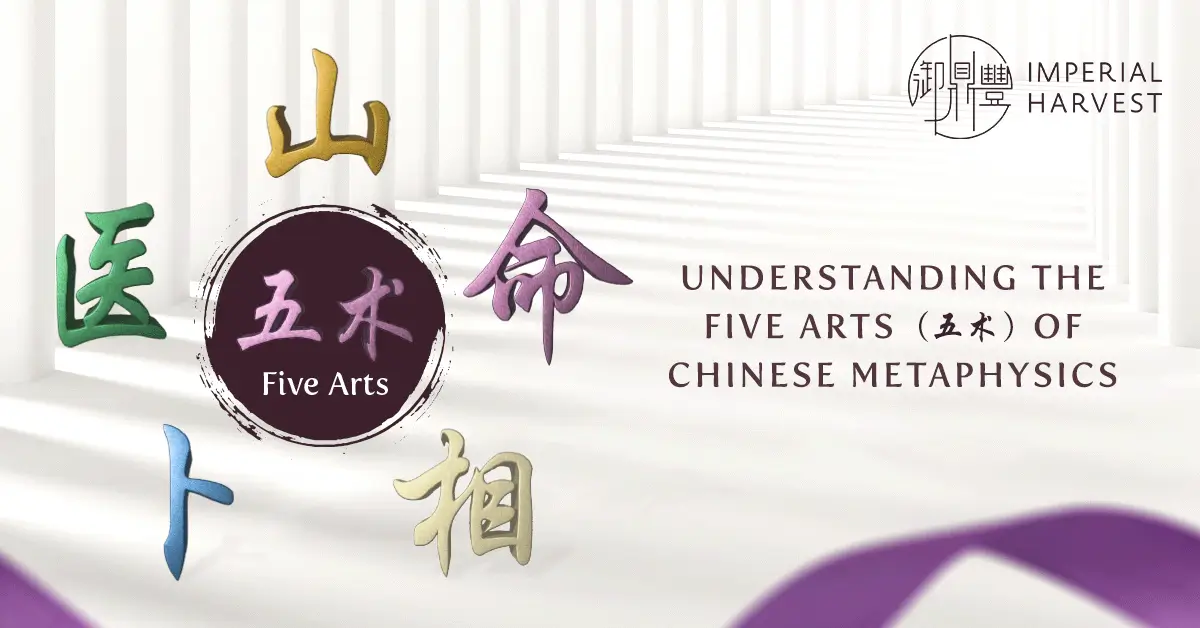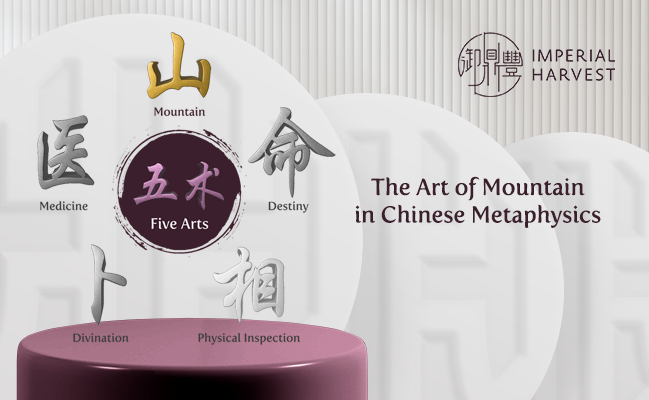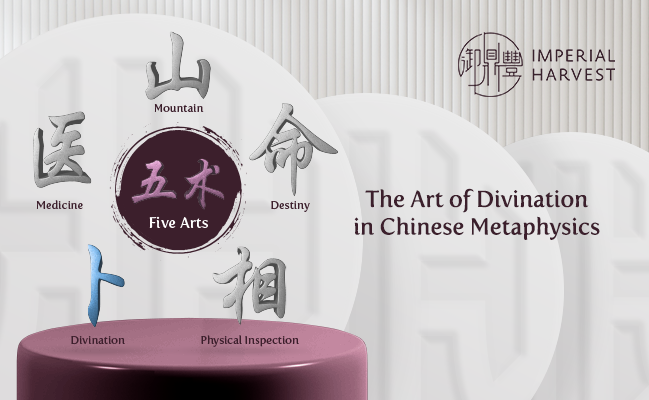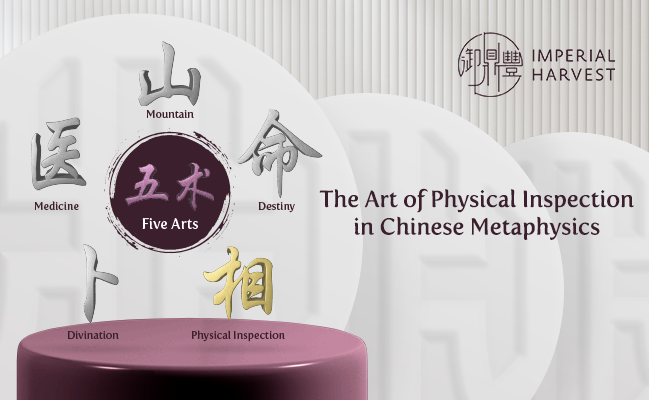Posted by Imperial Harvest on 22 March 2024
Estimated Reading Time: 5 mins
In ancient Chinese culture, the rhythms of nature synchronised seamlessly with the agricultural cycle. Among the tools used for agricultural planning and development in ancient China, the 24 Solar Terms (二十四节气) played a crucial role. These terms, aligned with specific astronomical occurrences and natural phenomena, mark subtle shifts in the Earth’s temperatures and climates. They guided farmers towards bountiful harvests by indicating the optimal times for planting, cultivating, and harvesting crops.
Each solar term is determined by the Earth’s position relative to the Sun, spanning 15 degrees along the ecliptic longitude. This division was crucial for calculating the intercalary months of the year, helping to keep the lunisolar calendar in sync with the solar year.
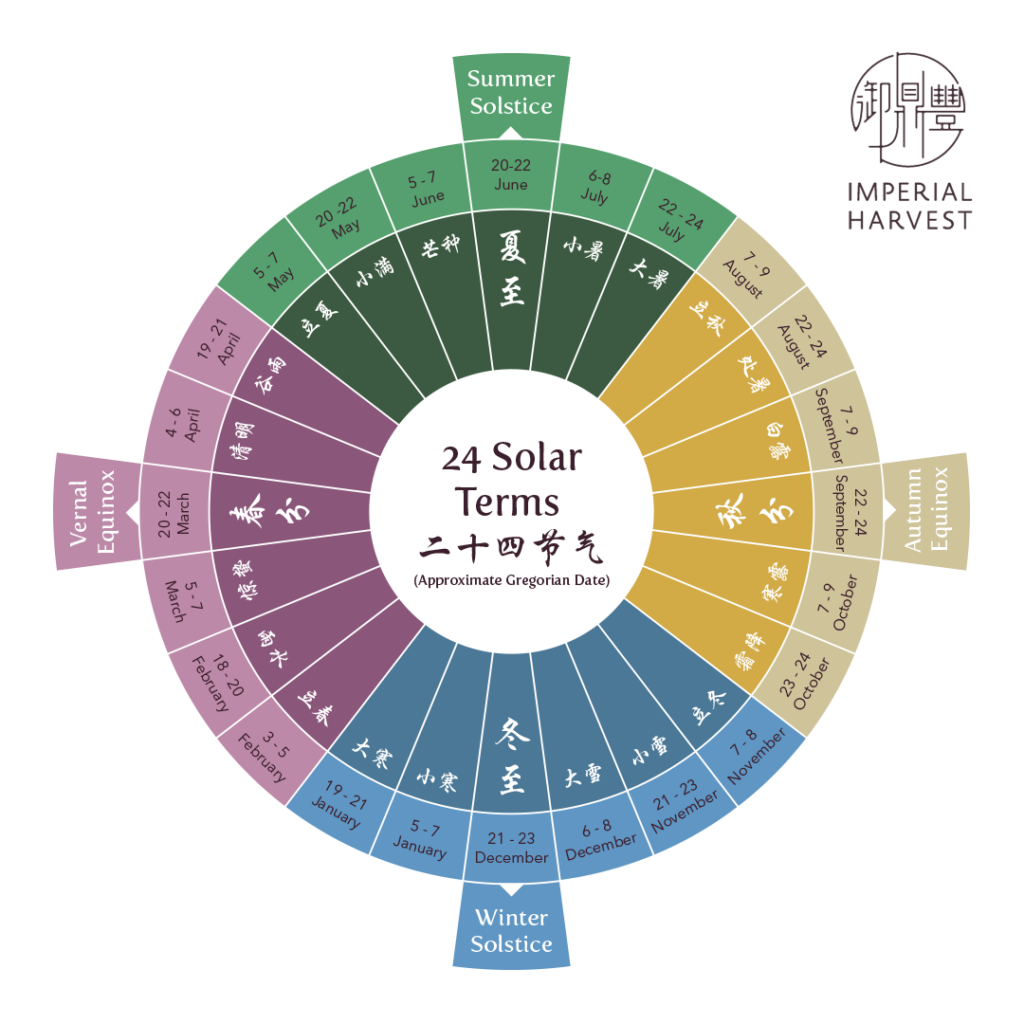
Origins of the 24 Solar Terms
The concept of Solar Terms traces its roots back to the Shang Dynasty (17th century BC to 1046 BC), initially establishing the framework for the four major seasons. The development of these terms evolved, becoming more refined by subsequent dynasties.
One of the earliest surviving scientific documents, 《夏小正》(Xia Xiao Zheng), written during the Xia dynasty, stands as the earliest documented agricultural almanac from ancient Chinese civilisation. This text documented the Big Dipper constellations as indicators of different months and is believed to contain the first mentions of the Winter Solstice (冬至) and the 24 solar terms. The Xia calendar, by denoting the new moon as the first day of the month and the full moon as the 15th day, proposed that each month follow a naming convention based on the 12 Earthly Branches. This calendar was further refined to include the 24 solar terms, reflecting the changing characteristics of the seasons.
The lunisolar calendar, essential for ancient China’s primarily agricultural society, guided farming communities in determining the appropriate times for agricultural activities. During the Han dynasty (202 BC to 9 AD, 25 to 220 AD), the solar year was divided into the full spectrum of 24 solar terms, officially incorporating them into the Chinese calendar. These terms marked astronomical events such as equinoxes and solstices, alongside other natural occurrences, to optimise farming communities’ productivity.
Learn more about the Chinese Calendar here
The 24 Solar Terms
Each solar term, lasting approximately 15 days, aligns with dates on the Gregorian calendar. These terms signify changes in the season, climate conditions, and various aspects of nature that impact agricultural practices. For instance, “Beginning of Spring” and “Beginning of Summer” signal seasonal shifts, while “Grain Rain” and “Greater Heat” indicate significant climate changes.
Solar Term English Translation Meaning of Solar Term Sun’s Longitude Commencement Dates Associated Chinese Zodiac Associated Earthly Branch
Li Chun (立春) Coming of Spring Marks the start of Spring, signifying a time of rejuvenation and fresh beginnings. 315° 4 February Tiger (虎) Yin (寅)
Yu Shui (雨水) Rainfall Marks the onset of rainfall, nurturing budding life. 330° 19 February Tiger (虎) Yin (寅)
Jing Zhe (惊蛰) Awakening of Insects Signifies the moment when hibernating animals start to awaken, rejuvenating the Earth. 345° 5 March Rabbit (兔) Mao (卯)
Chun Fen (春分) Spring Equinox Indicates the peak of Spring, and a time of equilibrium where day and night are equally long. 0° 21 March Rabbit (兔) Mao (卯)
Qing Ming (清明) Bright and Clear Symbolises a period of increasing warmth. 15° 4 April Dragon (龙) Chen (辰)
Gu Yu (谷雨) Grain Rain Denotes beneficial rainfall for grain cultivation and marks the end of the Spring season. 30° 19 April Dragon (龙) Chen (辰)
Li Xia (立夏) Coming of Summer Heralds the beginning of Summer. 45° 5 May Snake (蛇) Si (巳)
Xiao Man (小满) Budding Season Marks warmer climates and abundant rainfall create the perfect period for planting grain. 60° 20 May Snake (蛇) Si (巳)
Mang Zhong (芒種) Planting Season Indicates the phase of planting wheat and other vital crops for future harvest. 75° 5 June Horse(马) Wu (午)
Xia Zhi (夏至) Summer Solstice Marks the peak of Summer, with the longest day and the shortest night of the year. 90° 21 June Horse(马) Wu (午)
Xiao Shu (小暑) Lesser Heat Represents the hot and dry phase of Summer. 105° 6 July Goat (羊) Wei (未)
Da Shu (大暑) Greater Heat Marks the end of Summer, symbolising the hottest and most humid part of the year. 120° 22 July Goat (羊) Wei (未)
Li Qiu (立秋) Coming of Autumn Marks the start of Autumn. 135° 7 August Monkey (猴) Shen (申)
Chu Shu (处暑) End of Heat Symbolises the waning heat of Summer, transitioning into the colder periods of the year. 150° 22 August Monkey (猴) Shen (申)
Bai Lu (白露) White Dew Marks the time when dew begins to form on plants and crops. 165° 7 September Rooster (鸡) You (酉)
Qiu Fen (秋分) Autumn Equinox Marks the peak of Autumn when day and night are of equal duration. 180° 22 September Rooster (鸡) You (酉)
Han Lu (寒露) Cold Dew Indicates a period of progressively colder mornings. 195° 8 October Dog (狗) Xu (戌)
Shuang Jiang (霜降) Frost Falls Represents the end of Autumn, and marks when frost begins to form. 210° 23 October Dog (狗) Xu (戌)
Li Dong (立冬) Coming of Winter Marks the start of Winter. 225° 7 November Pig (猪) Hai (亥)
Xiao Xue (小雪) Lesser Snow Marks the beginning of snowfall in China. 240° 22 November Pig (猪) Hai (亥)
Da Xue (大雪) Greater Snow Symbolises the period of heavy snowfall. 255° 6 December Rat (鼠) Zi (子)
Dong Zhi (冬至) Winter Solstice Marks the peak of Winter, representing the shortest day and longest night of the year. 270° 21 December Rat (鼠) Zi (子)
Xiao Han (小寒) Lesser Cold Commencement of the coldest period of Winter. 285° 5 January Ox (牛) Chou (丑)
Da Han (大寒) Greater Cold Marks the end of Winter and the coldest point of the year. 300° 20 January Ox (牛) Chou (丑)
Understanding the 24 Solar Terms in Chinese Metaphysics
In Chinese metaphysics, the 24 Solar Terms reflect the Yin and Yang cycle of the universe, illustrating the mutual transformation between Yin and Yang. The Summer Solstice, or Xia Zhi, is a period where Yang energy reaches its peak, marking the onset of Yin’s growth. This illustrates the principle of mutual transformation between Yin and Yang, where Yang emerges from Yin’s decline and vice versa (阳生阴死,阴死阳生). This dynamic is encapsulated by the Taiji symbol, mirroring the balance inherent in the natural world.
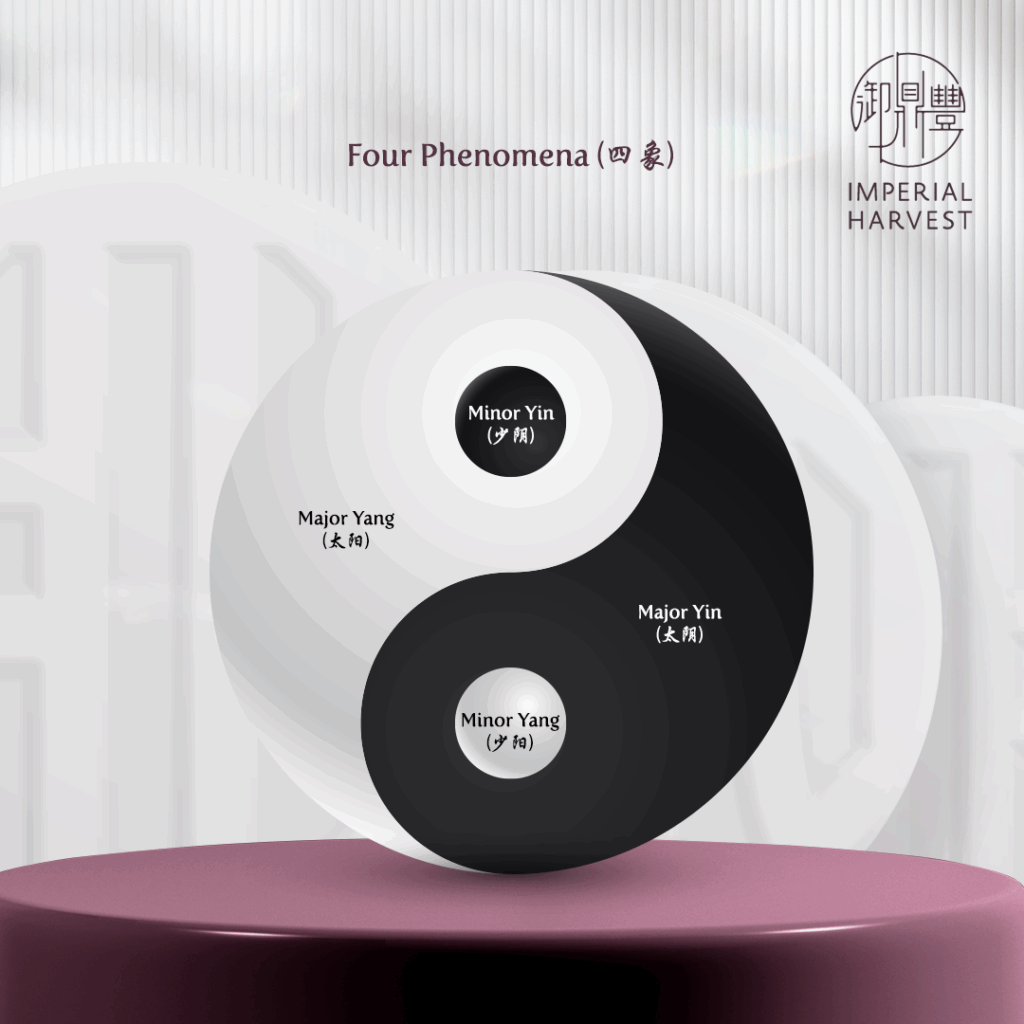
Legacy and Influence of the 24 Solar Terms in Chinese Culture and Metaphysics
The 24 Solar Terms are a testament to the sophisticated relationship between ancient Chinese civilisation and the natural world. These terms, which have been pivotal in agricultural planning, transcend their original purpose by also playing a crucial role in cultural practices and metaphysical beliefs. Through the careful observation of the sun’s path and the Earth’s rhythms, ancient scholars created a system that not only optimized agricultural productivity but also enriched the spiritual and social fabric of their society. The integration of these solar terms into practices such as Imperial Feng Shui and Qi Men Dun Jia illustrates their enduring significance, offering insights into time-specific energies and facilitating informed decision-making based on ancient wisdom.
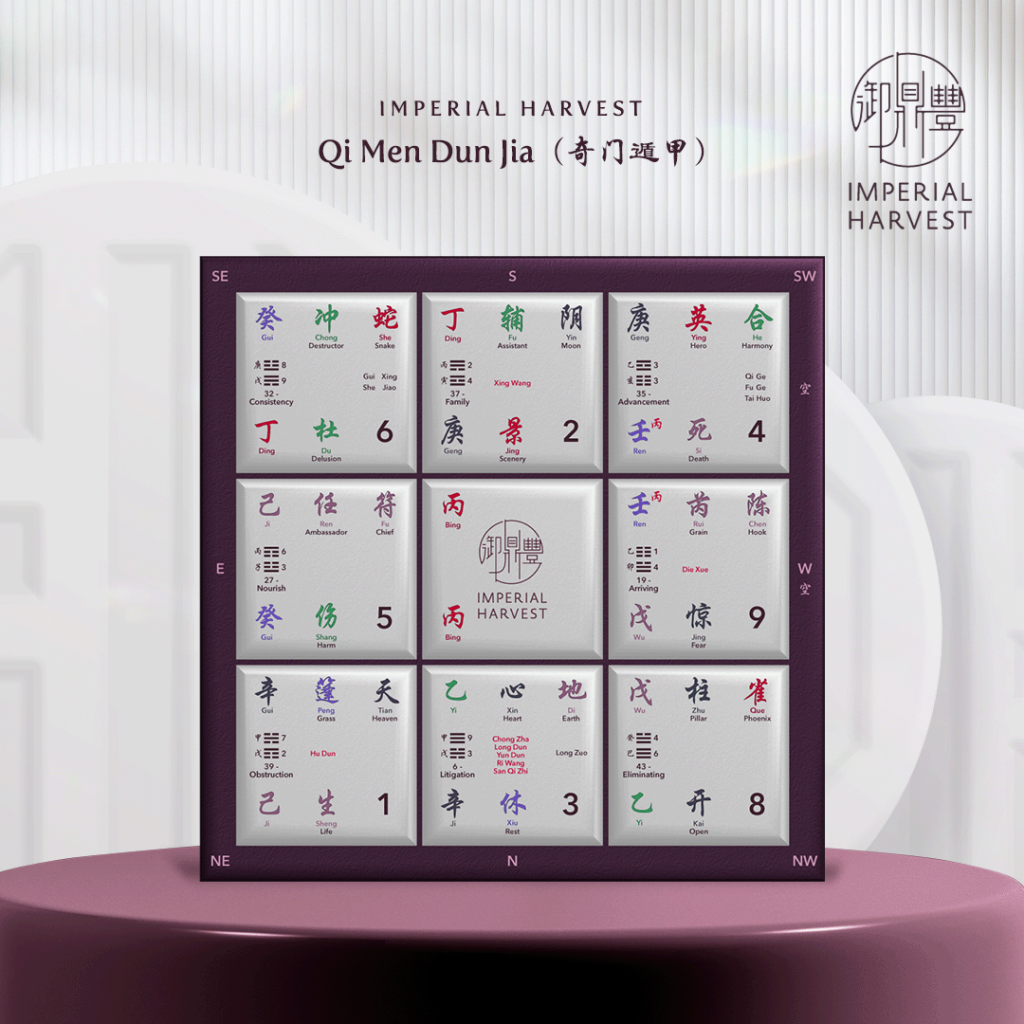
As we explore and appreciate the complexities of the 24 Solar Terms, we uncover a legacy that highlights the ingenuity of past generations and their harmonious coexistence with the cycles of nature. This enduring legacy continues to influence modern practices, reminding us of the profound wisdom embedded in ancient traditions and the timeless connection between humanity and the cosmos.
Imperial Harvest’s expert consultants are always on hand to guide you on your journey and provide you with insights to help you realise your fullest potential. Book a complimentary consultation today or contact us at +65 92301640.
We are located at
For prospective clients:Imperial Harvest402 Orchard Road
Delfi Orchard #02-07/08
Singapore 238876 For existing clients:Imperial Harvest Prestige
402 Orchard Road
Delfi Orchard #03-24/25
Singapore 238876
Most Read Articles
Get to read our life changing articles and get inspired.
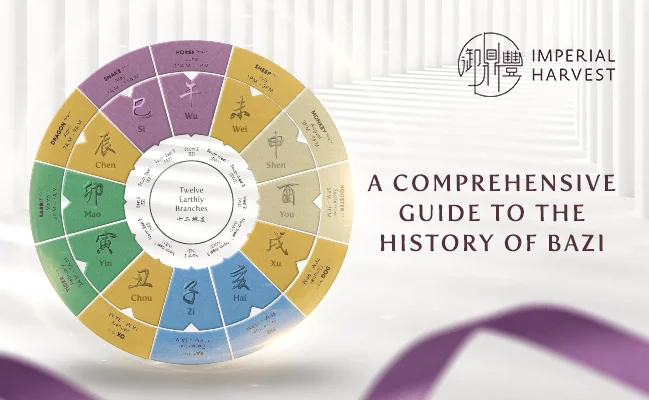
A Comprehensive Guide to the History of Bazi (八字)
Estimated Reading Time: 5 mins Bazi (八字) is often mistakenly assumed as the Chinese counterpart of western Astrology. The similarities between both systems lie in their utilisation of birth dates and time in their calculations, and the ability to be read from a tabulated chart. Where Astrology may take into account the positions of different […]
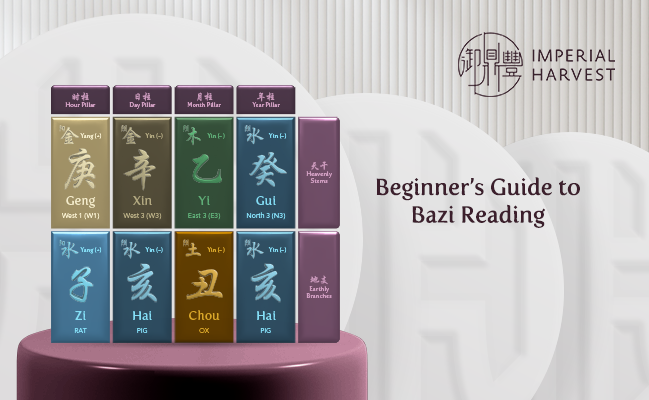
Beginner’s Guide to Bazi Reading
Estimated Reading Time: 5 mins Bazi (八字), or the Four Pillars of Destiny, is a multidisciplinary study in Imperial Feng Shui. It encompasses a well-developed set of metaphysical principles based on planetary influences, the duality of Yin and Yang, and the Five Elements. What is a Bazi Reading? Bazi is an intricate discipline within Imperial […]

Imperial Harvest Consecration Ceremony
Estimated Reading Time: 5 mins At Imperial Harvest, each earthly treasure undergoes a series of consecration rites performed by Master David, before it is bestowed upon its blessed owner. Every aspect of these sacred Chinese anointing rituals is carefully examined and accurately represented in Master David’s blessings, reflecting Imperial Harvest’s deep respect for these esteemed […]
